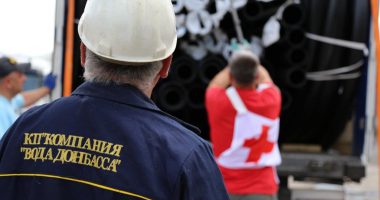You have proposed the creation of “safety zones” along the contact line in eastern Ukraine. Why is their creation so important?
The armed conflict in Donbass is taking place in highly populated areas. Survival of hundreds of thousands of people depends on vital infrastructure such as water, gas plants or electricity lines. Many of these installations are located on or close to the contact line and also serve schools, hospitals and kindergartens. Under international humanitarian law, these installations should be spared and should not be attacked or exposed to attacks, provided that they are not used for military purposes. However, given the number of times they have been hit in eastern Ukraine, there is a need for reinforced protection. This can be achieved through an agreement of all sides concerned directly or through a neutral intermediary such as the ICRC. What we mean by “safety zones” is a demilitarized zone, free of military personnel and equipment. These zones must be clearly defined and marked by the party which controls the zone, and not be attacked.
How many zones are we talking about?
To start with, we proposed to focus on just a few key zones, but there are a number of additional pieces of vital infrastructure which urgently need to have their protection reinforced as well. The suggested safety zones are around the Third Lift Pumping Station on Siverskyi Donetsk Channel, the Vasylivka First Pumping Station with the Donetsk Filtration Station, and the Verkhniokalmiuska Filtration Station (all in the Donetsk oblast); and the water pipeline in the Zolote/Pervomaisk area (Karbonit) and the Petrivskyi well field (in the Lugansk oblast). In total, more than 1.8 million people live in the area supplied by these water supply facilities.
What happens if areas designated as safety zones are used again for military purposes?
The zone may lose its protection if it is used for military purposes and, consequently, the concerned installation would be at risk again. It is crucial that all parties concerned spare no effort to preserve and respect these installations and that the best possible system of monitoring and enforcement, as for example through an organization as SMM, be agreed upon.



